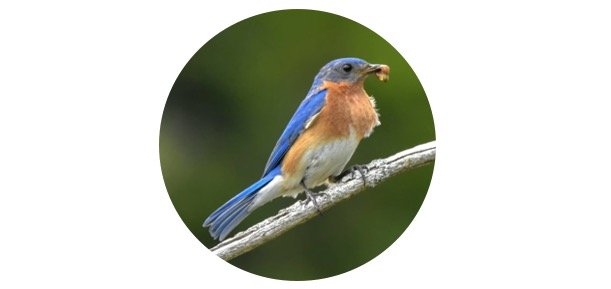What Do Starlings Eat? All You Need To Know
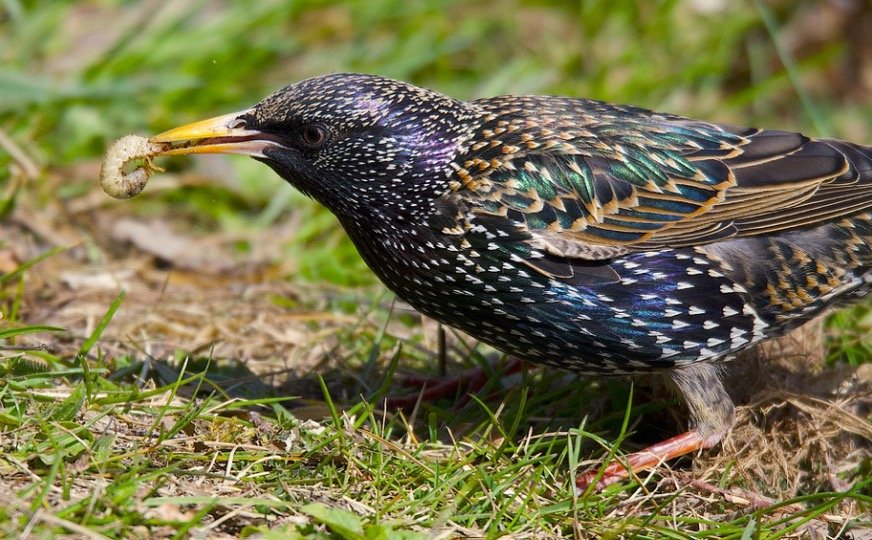
Table of Contents
What do Starlings eat?
European starlings are a popular family of little birds that may be found across Europe, Asia, Africa, and North America. Starlings are arguably best known for their spectacular flying displays, known as murmurations, in which thousands of them flock together and travel across the sky in a synchronized swirling mass.
Murmurations of starlings are regarded as one of nature’s most spectacular and ethereal spectacles. Many people are unaware that starlings have a broad and intriguing diet to match their eccentric behaviour. So, what do starlings eat?
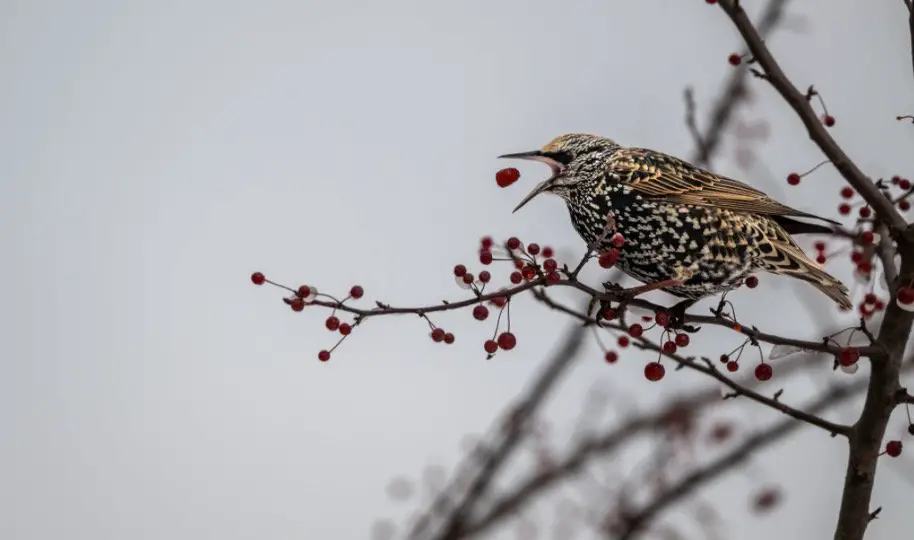
Starlings are omnivores that eat seeds, nuts, berries, and grains, as well as invertebrates including spiders, larvae, worms, and caterpillars. Because of their adaptable diet, starlings can make the most of their often diversified grassland or forest settings.
Although starlings are primarily omnivores, they do favour insects. Starlings, once adult, have a diversified diet that takes advantage of their often diverse farming settings. Despite their small size, starlings have significant energy requirements and must eat a lot of food on a daily basis.
Continue reading to find out why starlings are omnivores and how their fascinating meals complement their other complicated behaviours.
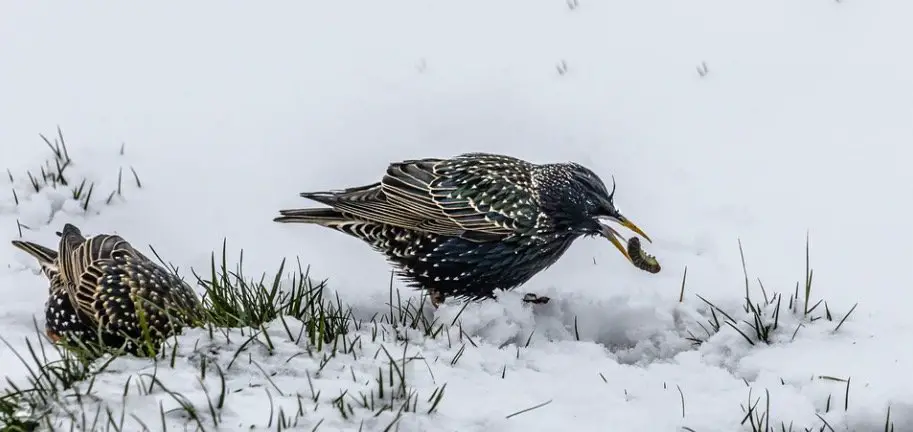
What do Starlings eat in the winter?
Prior to roosting in fall and early winter, starlings are quite active and gregarious, and they will typically consume on the most nutritious plant material they can locate, as well as practically any and all minute insects.
The best time to view a starling murmuration is in late fall, between September and November, just before starlings return to their winter roosts. When starlings congregate in big groups, they usually eat as a group, which is why they have a reputation for swallowing an entire bird feeder in minutes!
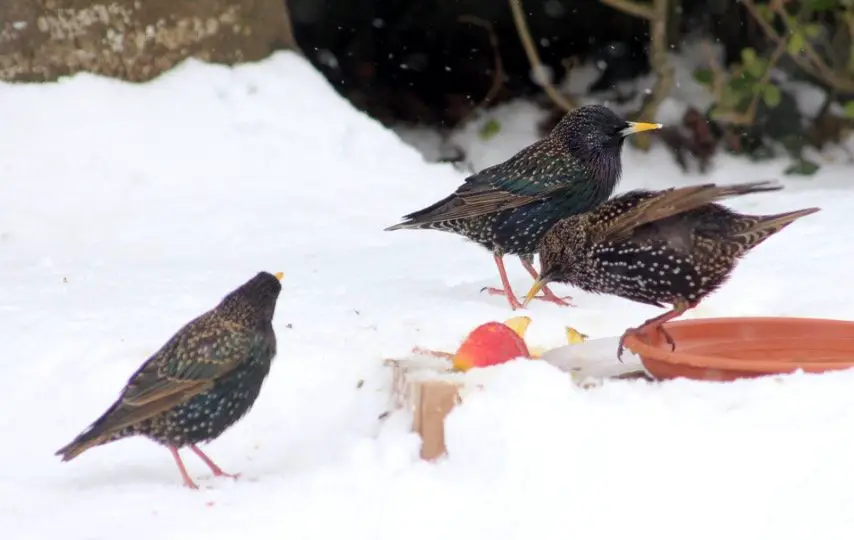
Starlings are famous for their voracious appetites, and they will eat everything from seeds and grains to insects all year long, especially in the winter.
They do devour more insects in the late winter and throughout the mating season, which lasts from early March until the end of July. Throughout the summer, starlings will eat berries, nuts, grains, and seeds. To accommodate this, their gut will extend somewhat.
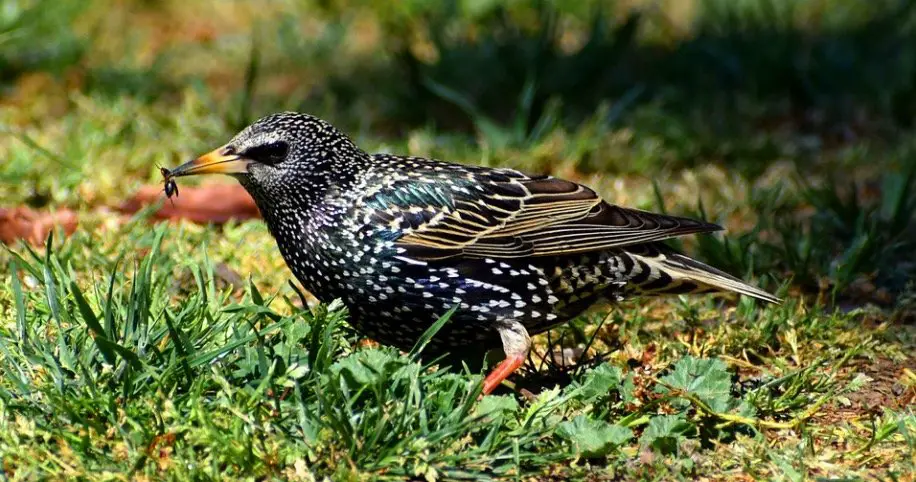
What do Starlings eat in the grass?
Worms, larvae, beetles, and other insects, as well as seeds, grains, and nuts, abound in the grass. Starlings feed on leather jackets (crane fly larvae), which thrive on lawns and meadows.
Starlings have exceptionally powerful legs and are often observed hopping across the lawn, making it easier for them to traverse meadows.
Starlings seem to prefer large, open, and diversified settings because they supply the nutrient-dense, varied omnivore food that they need to survive. Grasslands are abundant in the soft foods that starlings like.
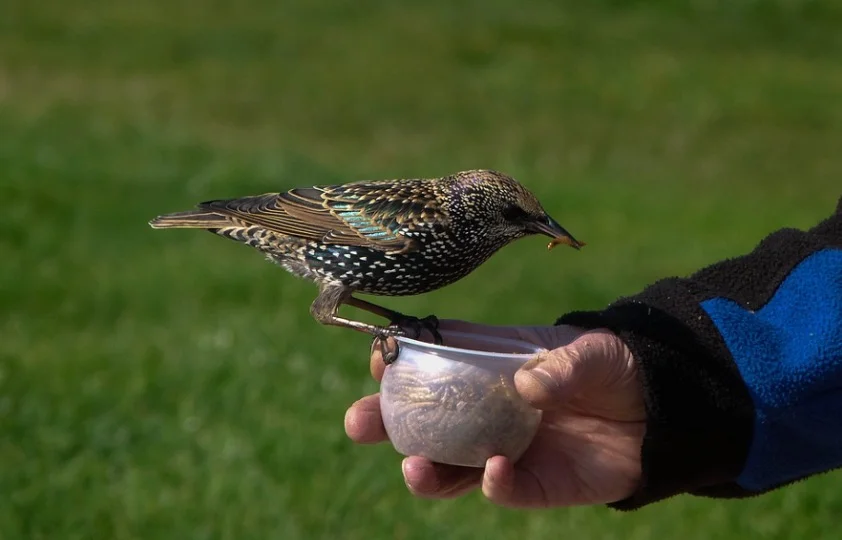
What can you feed Starlings from bird feeders?
Absolutely! Starlings like a well-stocked bird feeder and prefer softer grains and seeds. Many people prefer to keep starlings away from their gardens rather than enticing them, mostly because they will devour everything and everything accessible to them, leaving little for other birds.
This isn’t a flaw; starlings have evolved to eat in groups, and devouring large quantities of food in a short period of time is advantageous. If you do want to feed starlings from your birdfeeder, keep in mind that starlings have rather soft bills, thus soft bill mixtures go down very nicely.
Soft bill mixtures, which include soft grains, sunflower hearts, raisins/sultanas, and mealworms, are also appropriate for robins, thrushes, blackbirds, and wagtails.
Suet, mealworms, fat balls, and kitchen scraps are all excellent for feeding starlings, but keep in mind that a swarm of hungry starlings will devour nearly everything you put out for them, even more costly suets or bird seed mixtures!
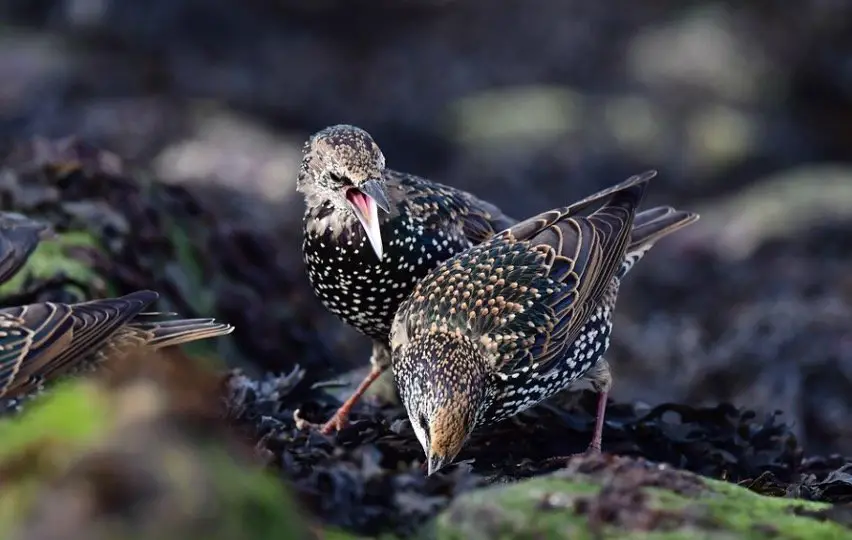
What do baby Starlings eat?
Starlings feed their young with a combination of tiny, soft-bodied invertebrates that both the male and female bring back to the nest. This includes beetles, caterpillars, millipedes, crane fly larvae, grasshoppers, and crickets, depending on their environment.
When the chicks are ready to feed, these little objects are offered to them shortly after hatching. Larger insects and a greater variety of food will be offered as the nestlings get older.
Before the young hatch, parents will often bring food items to the nest, accumulating a modest food supply to ensure the nestlings have adequate nourishment. In general, both the male and female will share the responsibility of feeding the young.
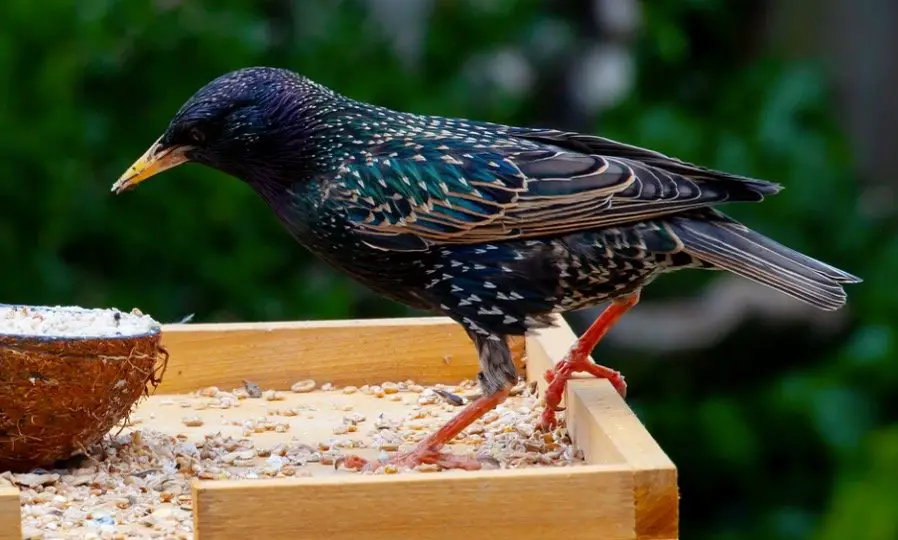
Are Starlings omnivores?
Starlings are unquestionably omnivores, yet they act more like insectivores during at least part of the year. Starlings will mostly eat on insects for the majority of the year, most likely until summer arrives when seeds, grains, nut, and berries become more prevalent.
They eat a broad range of plant and animal material and are typically unconcerned as long as they can ingest and digest the meal safely.
Young starlings, like many other baby birds, have weak digestive systems that make it difficult for them to digest tough plant food. Soft larvae and other invertebrates will be offered to infant starlings when they are weaning.
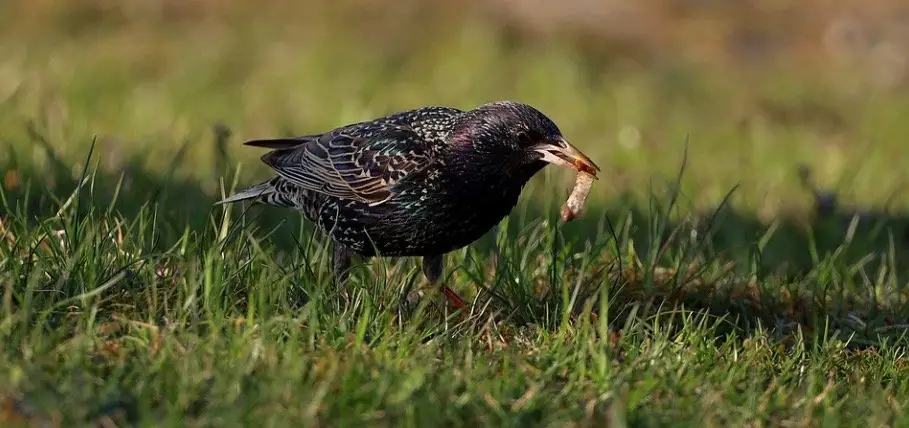
Starlings consume a wide variety of tiny insects and plants after they reach maturity. As previously stated, starlings are not averse to eating eggs and have been known to attack other tiny birds, but eating them seems to be uncommon.
Starlings’ ravenous appetites are partially constrained by their soft bills, which keep them from overindulging on tougher seeds and grains that other birds quickly ingest. This is why soft insects are preferred, and why starlings act more like insectivores in late winter and throughout mating season.
Do Starlings eat baby birds?
Starlings are known to be aggressive and have been known to drive other bird species out of their habitats. Because starlings are friendly and migrate in huge groups, they have a lot of numbers when it comes to invading other birds’ habitats.
They also have fights, usually over food. When starlings fight over food, the resulting conflict may easily end in a bird’s death. Because of their voracious appetites, starlings are often eager to ingest anything and everything in order to replenish their energy levels.
As a result, they have been seen eating tiny eggs and attacking newborn birds. They are more inclined to attack other birds in order to’shoo them away,’ than consume them.
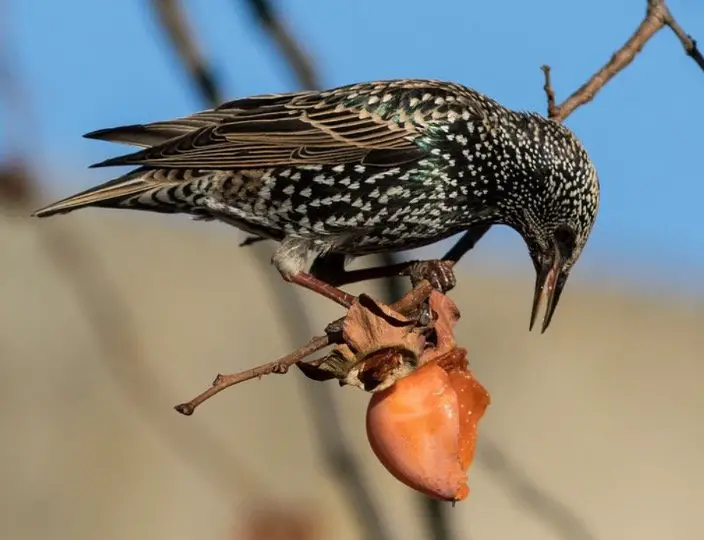
This is more a matter of need and food availability than anything else; as long as starlings have access to the wide omnivorous diet they require, they will seldom, if ever, need to devour newborn birds.
Finally, starlings are omnivores that can consume everything they can get their soft beaks into. Most meat is probably too difficult for starlings, but a hungry starling wouldn’t turn down the chance to devour a cracked egg if they were so inclined!
